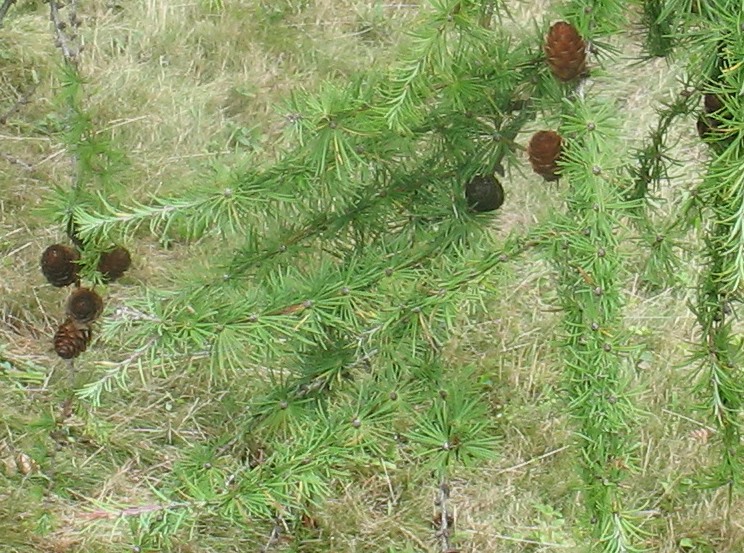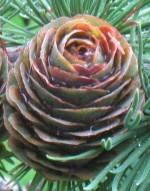 Japanese larch like other larches is a deciduous conifer. In spring the needle-like sea green foliage marked with two white bands appears on the pendulous brachlets turning dark green in summer, and yellow-gold in the fall. The autumn coloration is the trees’s chief asset and is especially beautiful when set off with a backdrop of evergreen conifers. The reddish-brown bark that peels in long strips to reveal red beneath, and the persistent rosebud shaped cones add winter interest. A tall tree, Japanese larch is best used as a landscape specimen or in parks, golf courses, and other large areas. Although it is easy to transplant and tolerates shallow, acid soils it does not tolerate shade, drought or pollution.
Japanese larch like other larches is a deciduous conifer. In spring the needle-like sea green foliage marked with two white bands appears on the pendulous brachlets turning dark green in summer, and yellow-gold in the fall. The autumn coloration is the trees’s chief asset and is especially beautiful when set off with a backdrop of evergreen conifers. The reddish-brown bark that peels in long strips to reveal red beneath, and the persistent rosebud shaped cones add winter interest. A tall tree, Japanese larch is best used as a landscape specimen or in parks, golf courses, and other large areas. Although it is easy to transplant and tolerates shallow, acid soils it does not tolerate shade, drought or pollution.
Type: Deciduous conifer
Outstanding Features: Fall coloration; persistent cones; peeling bark
Form: Open, pyramidal, with drooping branches
Growth Rate: Medium to fast

Bloom: Male and female cones are produced on the same tree; 1-1½” cones are produced in a single year and persist on the tree.
Size: 80-90’ H x 30-40’ W
Light: Full sun
Soil: Average, moist, well-drained, slightly acidic
Hardiness: Zones 5-7
Care: Prune in midsummer
Pests and Diseases: Susceptible to larch case-bearer, woolly aphid, and sawfly
Propagation: Seeds, grafts, cuttings; cultivars by grafts
Outstanding Selection: ‘Pendula’ (small with very drooping branches).
